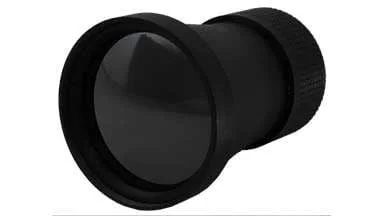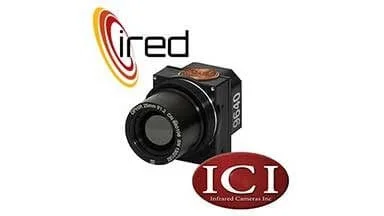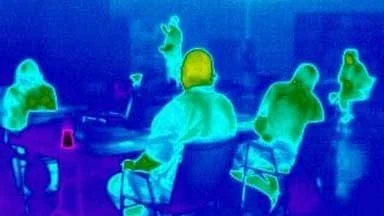Thermal imaging is all over the news, especially regarding using thermal imaging cameras for temperature screening in people. As businesses, social venues, event and travel spaces reopen, they are beginning to screen the public for fever.
What is temperature screening and how is it different from using thermal imaging as a tool for medical screening? Read more to understand this fascinating technology…..
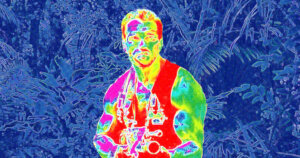
Many people got their first look at thermal imaging in 1987, when Arnold Schwarzenegger was tracked by an alien using thermal vision in the movie Predator. There is a misconception that the beautiful colors in a thermal image are what the camera records – however this is not the case. Thermal cameras record infrared emissions and store the data as a temperature point in every pixel. The computer software turns this data into a colorful representation of all the temperature points collected, allowing one to better understand the subject.
In the case of medical thermal imaging, the data collected tells you a lot about a patient. Comparison of the differences in temperatures across symmetrical areas of the body identifies abnormalities that require further investigation. This makes medical thermal imaging a valuable screening tool.
Thermal imaging devices are used for all kinds of applications where quick identification of temperature change is helpful. We see thermography used in industry, outer space, the military and even by your local HVAC guy. Over the years, medical thermal imaging has evolved to be quite specific. The devices in place for scanning living beings have defined specifications necessary to provide the detail needed for evaluating health. For example, medical thermal imaging equipment requires high resolution (recommended 640×480), and precision (+/- 0.050C sensitivity). Medical-specific thermal imaging cameras are also programmed to provide detail within the normal temperature range of a living being (20-450C). The American Academy of Thermology has detailed specifications for clinical use of thermal imaging in veterinary and human medicine.
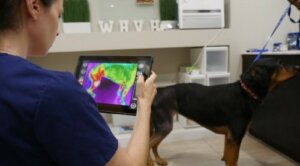
In veterinary medicine, we use medical thermal imaging (termed “thermology”) to identify areas of thermal asymmetry, which helps us identify areas that may contain disease. Normal living beings have thermal symmetry. Lack of thermal symmetry is abnormal. For example, temperature imbalance between the right and left foot of the same patient is abnormal.
Medical thermology is not expressly interested in the actual ‘real-time’ temperature of the region; instead, the tool is used to identify and establish where there are areas of high or low temperatures that signal a need for further evaluation. For example, a left foot that images much colder than the right foot (termed hypothermia) may indicate an issue with decreased circulation, nerve impingement, or muscle atrophy. A right shoulder imaging much hotter than the left shoulder (termed hyperthermia), may indicate inflammation, increased blood flow or muscle strain. The imaging software assigns colors to the pixels of temperature data, producing a visual image for interpretation.
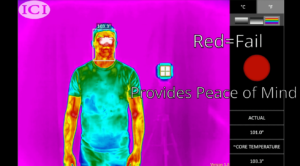
Temperature screening thermography uses the same medical-grade thermal devices with the same detailed specifications required for evaluation of living beings. The precision is critical, as temperature screening requires equipment that is so specific it can identify temperature elevations with an accuracy +/- 0.050C.
Temperature screening software uses facial recognition to calculate an accurate body temperature from the medial canthus of the eye, which is proven to be the most accurate superficial point for evaluating internal body temperature.
The best part about using thermography for temperature screening is that the device measures temperatures from 6 feet away, allowing for safe, non-contact use. The system can be programmed to ‘flag’ any elevated temperature and the person then undergoes a secondary screening protocol.
Media has often misrepresented temperature screening in articles and news blurbs to be something easily accomplished using hand-held infrared thermometers available cheaply in your neighborhood Home Depot®. This is simply not the case! Just like medical thermology units, temperature screening thermography needs to be accurate and repeatable – public health demands precision when attempting mass screening of individuals for fever.
Thankfully, the USA FDA developed detailed guidelines for proper implementation of temperature screening devices and only systems that meet ISO guidelines, use a black body for constant environmental calibration, and are FDA approved, should be utilized for this purpose. Non-contact infrared thermometers (NCIT), such as hand-held thermometers aimed at your forehead, do not comply and are not accurate enough.
In South Korea, temperature screening via infrared thermography is used for all arrivals in airports, ports and border crossings since 2003. This technology has significantly decreased the spread of infectious disease, and along with secondary confirmation protocols, has allowed South Korea to protect the safety and welfare of its citizens. It is conceivable that the USA and other countries will permanently implement this technology in all public places, allowing for improvement in public safety, more rapid response to disease threats, and prevention of the shutdown of commerce and travel.
These separate applications of thermography – public temperature screening and medical thermal screening, stand together to provide unlimited potential for insuring our well-being.
Isn’t it great to see technology help our future?


